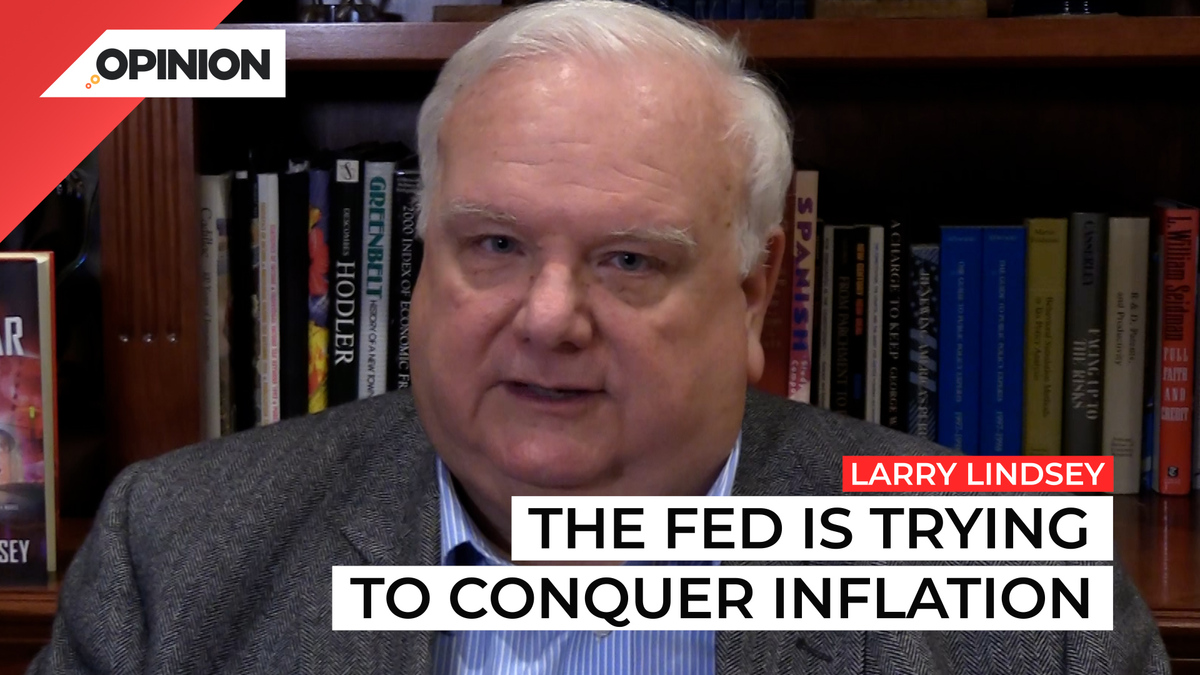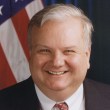
Commentary
-
Our commentary partners will help you reach your own conclusions on complex topics.
Times are tough. Right now, the Federal Open Market Committee that sets… interest rates and determines how much money is in circulation, has two bad things going on. The first is it has an inflation rate by its preferred measure of 6.8%. It wants two. Second, we’re probably in a recession. Growth in the first half of this year averaged less than negative 1.6%. Again, their target is two.
So they’re missing their target on both counts. So what on earth are they going to do? Well, right now they’ve decided to target the inflation rate first and foremost. And they’re going to be raising rates very sharply. What has the Fed done in the past? Well, a few decades ago, a man named John Taylor, professor at Stanford, came up with something he called the Taylor rule. Which isn’t really a rule, it was just a way of estimating with regression equations, what the Fed was doing. And he came down with two basic rules.
First, how far is the Fed off in terms of real growth? And second, how far off is the Fed from its target in terms of inflation? And then he said, if things were normal and they were right on target, we should be running a interest rate two points above inflation. Well, if we applied that formula now, the fed funds rate, which they’re just about to raise to a three to three and a quarter percent range, should be 9.4%. They are six points off. According to the Taylor rule and what the Fed’s done in the past, interest rates should be three times what they are now. Well, that gives a pretty simple answer. They should be hiking rates.
Well, so far so good. The problem is that it’s going to cause the recession to probably be deeper than it otherwise would have been. If they continue to hike rates this year, we’re probably going to be able to have a recession that brings down the inflation rate for the year to about five and a quarter percent. And that would imply inflation in the second half of the year of only three and three quarters percent. That would meet the definition of what chairman Powell has called, substantial progress. Now that’s not going to allow them to cut rates, but it might allow them to pause until inflation drops closer to its 2% target.
Well, that sounds easy, doesn’t it? And frankly, there’s not a lot of good news out there and this is… good news. It’s a path forward. At least we have hope. The problem is that this is going to involve a moderately deep recession. 1.6% negative for this year is about what’s going to take place. Even the great financial crisis involved an average decline of 2.6% over a total of six quarters. The Volcker recessions of 1980 and then again, a second one back-to-back in ‘81 and ‘82, averaged declines of just 0.6% a quarter. So this one is, is fairly steep. It wasn’t cheap.
Second thing is a risk, and that is that financial markets become disorderly. And what does that mean? Well, it’s like the Supreme Court and pornography. You know it when you see it. But it…what would happen is that some companies might not be able to borrow at all. There might be large declines in stock prices and things that would then resonate throughout the economy. We remember that happening in the great financial crisis when the housing market tanked. So there are risks here.
The easiest thing to do is to stop inflation before it starts. The fed didn’t do that. Now it’s trying to conquer inflation. The risk here is that a, it’s costly, could get more costly, and possibly it could create a financial crisis. Best thing to do is, don’t get in trouble in the first place.
-
Election 2024 will boil down to the Great Lakes states
Pollsters and pundits have been engaged in a long debate about how Biden or Trump might win the 2024 election, with much of their focus spent on the “swing state” electoral battlegrounds. While the winners of Alabama or California may be obvious, for instance, who wins Pennsylvania is a more difficult question. Watch the above… -
Why the Fed should consider Theory of Reflexivity when fixing policy
The Theory of Reflexivity, often used in the context of economics and financial markets, implies that investors don’t base their decisions on reality but on their perceptions of reality. This creates a feedback loop where investors’ perceptions influence economic fundamentals, which in turn alter investor perceptions. Watch the above video as Straight Arrow News contributor… -
Federal Reserve surpassed its own wildest expectations
On May 14, the U.S. Bureau of Labor Statistics released the most current producer price index (PPI) report, which showed an increase of 0.5% month-over-month in April. After the report’s release, U.S. Federal Reserve chairman Jerome “Jay” Powell said that while he believes the current policy rate is restrictive by many measures, the Fed needs… -
Polls give slight advantage to Trump in Electoral College
With the U.S. general election only six months away, leading candidates President Joe Biden and former President Donald Trump appear to be engaged in a very close contest. In their 2020 race, the winner of the Electoral College was ultimately determined by a relative handful of voters in just a few swing states, even though… -
College sports is big money but not everyone benefits
March Madness has wrapped up and Caitlin Clark has emerged as a household name as well as a wealthy student athlete. Earning over $3 million throughout her college career, her success stands in stark contrast to the previous notion that collegiate athletes shouldn’t earn anything beyond their scholarship. Straight Arrow News contributor Larry Lindsey examines…
Latest Opinions
-
 Getty Images
Getty Images
Trump admin. asks federal workers to detail weekly accomplishments, again
-
 Getty Images
Getty Images
Military members with gender dysphoria to be processed for separation: DOD
-
 Getty Images
Getty Images
Zelenskyy says Trump not owed an apology after White House dustup
-
 Getty Images
Getty Images
NCAA Tournament: Which men’s teams are on ‘bubble watch’?
-
 Getty Images
Getty Images
NFL scouting combine: How much faster can these players run?
Popular Opinions
-
In addition to the facts, we believe it’s vital to hear perspectives from all sides of the political spectrum.






